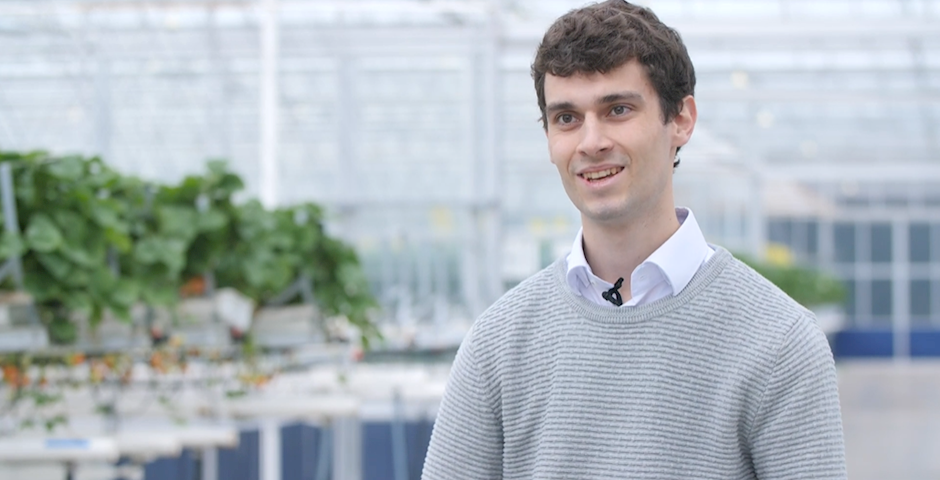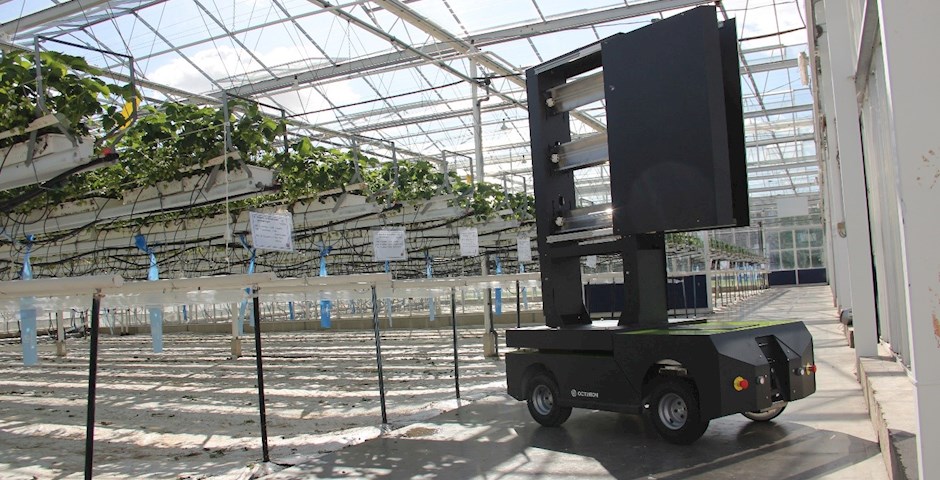
Bringing a greener agriculture to the spotlight

What is the challenge behind the project?
One of the most widely spread diseases in horticultural crops is mildew. Until now, it has mainly been fought with chemical agents which are responsible for residues on the crops. However, with the latest European regulations on the use of pesticides, there is a need to find sustainable alternatives to control mildew. Regular application of crop protection products is time-consuming, increases risk of pesticide resistance and is the main cause of chemical residues on fruits which are of concern to consumers.
How does UV-ROBOT respond to this need?
The project is developing UVC (ultraviolet spectrum) strategies to combat mildew with trials on various crops: strawberry, tomato, lettuce and cucumber in Belgium, cucumber and tomato in France and basil and strawberry in the UK. An autonomous robot drives through the greenhouses and applies ultraviolet radiation on the plants. Tests at night have proven much more efficient in combatting mildew because the disease’s repair system is activated by light.
Which are the benefits of light use?
UVC helps tackle a health issue because it decreases reliance on chemicals spray agents altering crops’ quality. The production of fresh fruits, herbs & vegetables is therefore more sustainable and the food cleaner, safer. Operating a robot also means less workload for the farmers and an increased production efficiency in the NWE horticultural sector.
What are your project’s expectations for the future?
Our goal with UV-ROBOT is to deliver a new technology: a fully autonomous robot with a smart navigation system which would be at the centre of five current disease management strategies (one for each crop) thus less relying on chemicals. By the end of the project, it will be important to give advice to the growers and provide them with a clear approach to implement the technology in their greenhouse. We later also want to expand the UVC strategy to other crops.

Why choose to conduct your project in the framework of transnational cooperation?
UV-ROBOT gathers 9 partners across 3 countries (BE, FR, UK). Collaboration between partners is essential to collect information, share knowledge and provide guidance to one another on the UVC strategy. Some partners’ expertise on applied horticultural research complements others’ expertise on the development of robotics and sensors (based on volatile organic compounds analysis).
How has Interreg NWE been of help?
Interreg NWE is the backbone for the different activities in our project, from meeting project partners during Programme’s events to getting administrative support and training and filling in application form. Moreover, every project has its own digital platform to showcase their achievements.
The UV-ROBOT project was granted an extra 367 000 euros budget in the frame of Interreg North-West Europe first capitalisation call. As from end 2021 and for a two-year period, the project will be extending its field of action to other horticultural diseases and pests, leading to a further reduction of chemicals on crops. Five new partners, of which four are from the Netherlands, have joined the project and will bring their useful expertise in greenhouse cultivation along.
